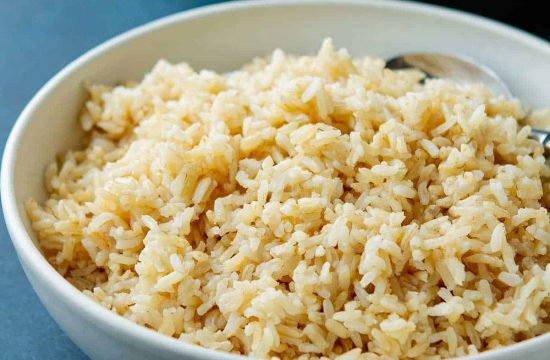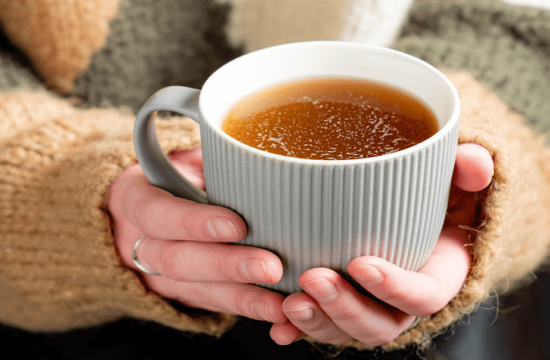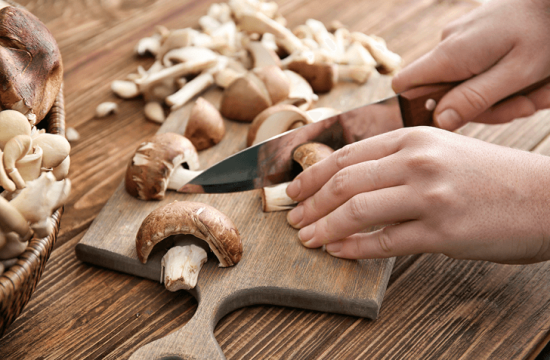The 1st chapter of Nidanasthanam of Ashtanga Hridayam is named as Sarvaroga Nidanam Adhyaya. This chapter deals with the explanation of ‘diagnosis of diseases in general’.
The topics covered in this chapter include –
- Roga paryayah – synonyms of the term ‘disease’
- Nidana pancaka – five diagnostic tools
- Nidana – causative factors of the disease
- Purvarupa – premonitory symptoms / prodromal symptoms
- Rupa – clinical features / characteristic signs and symptoms
- Upasaya – diagnostic tests
- Samprapti – Pathogenesis
- Kinds of Samprapti
- Sarvaroga karana – causes of all diseases / etiology
- Types of unsuitable
- Vatavrddhi karana – causes of increase of vata
- Pittavrddhi karana – causes of increase of pitta
- Kapha vrddhi karana – causes of increase of kapha
- Kapha vrddhi karana – causes of increase of kapha
- SarvaDosha vrddhi karana – causes for increase of all the Doshas
- Vrddha Dosha gati – fate of increased Doshas
Pledge by the author(s)
अथातः सर्वरोगनिदानं व्याख्यास्यामः।
इति ह स्माहुरात्रेयादयो महर्षयः।गद्यसूत्रे॥२॥
After having offered prayers to the God, henceforth we are going to explain the chapter pertaining to the explanation of ‘diagnosing the diseases in general’. Thus say (pledge) Master Atreya and other sages.
Roga paryayah – synonyms of the term ‘disease’
रोगः पाप्मा ज्वरो व्याधिर्विकारो दुःखमामयः।
यक्ष्मातङ्कगदाबाधाः शब्दाः पर्यायवाचिनः॥१॥
Roga, papma, jvara, vyadhi, vikara, duhkha, amaya,yaksma, atanka, gada and abadha – these terms are synonyms of disease.
Notes – Each of these terms indicates a certain aspect of the disease. The disease is called ‘roga’ because it gives rise to pain, it is ‘papma’ because it is born from sinful acts, ’jvara’ because it torments, ‘vyadhi’ for it brings in different kinds of abnormalities, ‘duhkha’ as it causes various kinds of unhappiness, ‘amaya’ – because it is caused by ama (undigested, improperly processed metabolites), ‘yaksma’ as it is a group of diseases (symptom complex, syndrome), ‘atanka’ for it makes life miserable, ‘gada’ because it is produced by multiple causes, ‘abadha’ for, it produces constant discomfort (to the body, mind and or sense organs). In addition to these, even the term ‘Dosha’ is also used as a synonym to indicate the disease.
निदानं पूर्वरूपाणि रूपाण्युपशयस्तथा।
सम्प्राप्तिश्चेति विज्ञानं रोगाणां पञ्चधास्मृतम्॥२॥
Nidana (cause),
Purvarupa (premonitory symptoms),
Rupa (signs and symptoms characteristic of the disease),
Upashaya (diagnostic test) and
Samprapti (mode of manifestation of the disease) are the five means of obtaining full knowledge (diagnosis) of disease.
Notes – Knowledge of all these five is not essential for the diagnosis of every disease. Many can be diagnosed by knowing any one or two, sometimes all the five are necessary.
Nidana
निमित्तहेत्वायतनप्रत्ययोत्थानकारणैः।
निदानमाहुःपर्यायैः
Nidana (cause) is indicated by synonyms such asnimitta, hetu, ayatana, pratyaya, utthana and karana.
Notes – A few more synonyms which are used rather rarely are mula, mukha, prakriti, ayatana and yoni. The term ‘nidana’ has two meaning –
- that which furnishes definite information. In this sense it is applied to diagnosis of disease and also to the section of the text which furnishes definite information about diseases. (Nidana Sthana).
- the ‘cause’ of anything. In the context of diseases it refers to the cause of the disease. It is this second usage which is more common.
Purvarupa: Premonitory symptoms / prodromal symptoms
प्राग्रूपं येन लक्ष्यते॥३॥
उत्पित्सुरामयो दोषविशेषेणानधिष्ठितः।
लिङ्गमव्यक्तमल्पत्वाद्व्याधीनां तद्यथा यथम्॥४॥
Pragrupa (or purvarupa) are those (signs and symptoms)which appear earlier to the yet to be manifested disease, not assignable to any dosha specificallybecause of their poor manifestation and mild nature. They are enumerated in the way they manifest in each disease.
Notes – Purva rupa is of two kinds. 1- Samanya and 2-Vishishta. The first one comprises of symptoms produced by one or more of the aggravated Dosha, these usually disappear when the disease actually manifests, and these may be common to many diseases. The second one, comprises of the signs and symptoms of the forthcoming diseases itself, appearing mildly and continuing their existence in the further stages of the disease. The ancient texts describe the first kind only under the heading ‘Purvarupa’ in some diseases, as it is difficult for the physician to recognize them and assign them to specific diseases. The second kind may be either mentioned or not, as it is easy for the physician to recognize the characteristic features of the diseases. In some diseases ‘Purvarupa’ is not mentioned at all. This should not be taken to mean that such a disease has no Purvarupa at all, but should be understood that in such diseases the specific features of the disease itself appear as ‘Purvarupa’.
Rupa: Clinical features / characteristic signs and symptoms
तदेव व्यक्ततां यातं रूपमित्यभिधीयते।
संस्थानं व्यञ्जनं लिङ्गं लक्षणं चिह्नमाकृतिः ॥५॥
Premonitory symptoms, after attaining clear manifestation, come to be known as rupa (characteristic signs and symptoms of the disease); also called samsthana, vyanjana, linga, lakshana, chinha and akriti.
Upashaya: Diagnostic tests
हेतुव्याधिविपर्यस्तविपर्यस्तार्थकारिणाम्।
औषधान्नविहाराणामुपयोगं सुखावहम्॥६॥
विद्यादुपशयं व्याधेः स हि सात्म्यमितिस्मृतः।
विपरीतोऽनुपशयो व्याध्यसात्म्याभिसञ्ज्ञितः॥७॥
Administration of either medicine, food or activity which is the viparita (opposite) of either the cause, the disease or of both, or though not actually opposite (but of identical nature), yet produces the effect of the opposite (Viparitarthakari) that of giving comfort to the patient is known as Upashaya. For a given disease, it is also called Satmya (suitable to the disease and the patient). The opposite of Upashaya is Anupashaya and is considered as Asatmya (unsuitable) to the disease.
Notes – Diagnostic tests becomes necessary only when the physician is unable to clinch the diagnosis by other methods, the following is an example furnished by ancient commentators. A patient comes to the physician complaining stiffness (rigidity and loss of movement) of his thigh.
This is a symptom of two diseases, viz –
(1) Paksaghata (paralysis of the legs (hemiplegia) a disease caused by increase of Vata and
(2) Urusthambha – a disease caused by increase of kapha and medas (fat).
Even after other methods of examination the physician is unable to determine the disease. So he prescribes anointing the thigh with oil. If, this treatment gives comfort to the patient (upasaya) then the disease is determined as paksaghata, because vata was mitigated by the oil. If, on the other hand, this treatment increased the discomfort (anupasya) then the diagnosis will be, urusthambha, because the oil produced greater increase of kapha. Thus the procedure helps to clear the doubt in the diagnosis. Readers will find details of these different kinds of upasaya in the commentaries on Madhava Nidana, Caraka Samhita etc.
Samprapti: Pathogenesis
यथादुष्टेन दोषेण यथा चानुविसर्पता।
निर्वृत्तिरामयस्यासौ सम्प्राप्तिर्जातिरागतिः॥८॥
The genesis or process of manifestation of the disease by the vitiated Doshas which are constantly circulating is known as Samprapti; also called Jati and Agati.
Kinds of Samprapti
सङ्ख्याविकल्पप्राधान्यबलकालविशेषतः।
सा भिद्यते यथात्रैव वक्ष्यन्तेऽष्टौ ज्वरा इति॥९॥
दोषाणां समवेतानां विकल्पोऽंशांशकल्पना।
स्वातन्त्र्यपारतन्त्र्याभ्यां व्याधेः प्राधान्यमादिशेत्॥१०॥
हेत्वादिकार्त्स्न्यावयवैर्बलाबलविशेषणम्।
नक्तन्दिनर्तुभुक्तांशैर्व्याधिकालो यथामलम्॥११॥
It is of five kinds such as Sankhya, Vikalpa, Pradhanya, Bala (strength and Kala counting the varieties (kinds) of each disease, as for example, when it is said that jvara (fever) is of eight kinds (and so on in other diseases) is Sankhya Samprapti;to indicate the different aspects of the Doshas involved (their kind, quantity, qualities and functions) is Vikalpa,samprapti signifying a disease as either independent (primary) or dependent (secondary) is pradhanya Samprapti;signifying a disease as strong ( serve, grave) or weak (mild) based on the nature of the cause etc. (signs, symptoms, organs involved, nature of abnormalities, general health, age and sex and many other aspects) is bala samprapti;to signify the time of the night, day, season, and digestion of food during which the disease and the Dosha are strong (predominant) is Kala samprapti
Summary of nidana panchaka
इति प्रोक्तो निदानार्थस्तं व्यासेनोपदेक्ष्यति।
Thus a brief narration of the nidana (etc) here; they be described in detail later
Sarvaroga karana: Causes of all diseases / etiology
सर्वेषामेवरोगाणां निदानं कुपिता मलाः॥१२॥
तत्प्रकोपस्य तु प्रोक्तं विविधाहितसेवनम्।
For all the diseases, the causes are the aggravated (increased) mala (Dosha);for their (of all Doshas) aggravation (the causes are) indulgence in different kinds of unsuitable foods, activities etc is said to be the cause
Types of unsuitable
अहितं त्रिविधोयोगस्त्रयाणां प्रागुदाहृतः॥१३॥
Unsuitables are the three kinds of Yoga (association, contact) of the three (factors) which were described previously (chapter 12 of Sutrasthana)
Notes – the three Doshas (vata, pitta and kapha ) have three state in respect of their pramana (quantity), guna (quantity) and karma (function), viz.,
1 – Sthana / Sama or Prakrita – normal
2-Vrddhi or Prakopa – aggravation or increase, more than the normal
3-Ksaya or decrease less than the normal
The last two are vishama or vikrita / dusta (abnormal). The Doshas in their normal state maintain the body in good health. This normalcy is very unstable. Doshas undergo either increase or decrease by the effect of food, activity, season etc; among these two abnormalities, vrddhi or increase is powerful. The Doshas which have become abnormal (especially the increased) bring about abnormal changes in the dhatus (tissues) and give rise to the diseases. Hence the above statement that Doshas are the causes of all diseases. The causes for the abnormalities of the Doshas are the three factors viz. Kala (season), Artha (objects of the five sense organs-light, sound, smell taste and touch) and Karma (activities of the body, mind and speech) in their three kinds of abnormal states (vishama yoga) viz, atiyoga (excess contact), ayoga (inadequate/poor contact and even absence of contact) and mithya Yoga (improper contact, perverse condition etc.). Three technical terms are also used to denote these three causes, viz-
- Asatmyendriyartha Samyoga (improper, excess, poor and perverse – contact of the sense organs with their respective objects).
- Prajnaparadha (transgression or violation of normal regimen regarding all the activities of the body, mind and speech; in other words, doing them either in excess, poor or perverse manner.
- Parinama – effect of season – the normal climatic condition of the season becoming excess, poor or perverse.
All these are briefly called either as Ahitahara Vihara, Mithyahara vihara or Asatmayahara vihara (unsuitable, improper or unaccustomed foods and activities).
Vatavriddhi karana: Causes of increase of vata
तिक्तोषणकषायाल्परूक्षप्रमितभोजनैः।
धारणोदीरणनिशाजागरात्युच्छभाषणैः॥१४॥
क्रियातियोगभीशोकचिन्ताव्यायाममैथुनैः।
ग्रीष्माहोरात्रिभुक्तान्ते प्रकुप्यति समीरणः॥१५॥
Vata gets aggravated from consuming foods which are bitter, salt and astringent in taste, of less quantity, dry (moisture less, fatless), taking food long after the usual time,suppression and premature initiation of the urges (of urine, feaces, flatus etc.), keeping awake at nights, speaking in high pitch for a long time, effect of therapies (emesis, purgation etc.) in excess (more than the required degree); (sudden) fear, grief and worry, excess of physical activities and sexual intercourse;during summer, terminal part of the day; night and food (digestion).
Pittavriddhi karana: Causes of increase of pitta
पित्तं कट्वम्लतीक्ष्णोष्णपटुक्रोधविदाहिभिः।
शरन्मध्याह्नरात्र्यर्धविदाहसमयेषुच॥१६॥
Pitta (gets aggravated/increased) from consuming foods which are of pungent, sour, and salt tastes, penetrating, hot (or heat producing) and causing burning sensation during digestion; bouts of anger,during autumn, mid-day, mid-night and middle part of digestion.
Kapha vriddhi karana: Causes of increase of kapha
स्वाद्वम्ललवणस्निग्धगुर्वभिष्यन्दिशीतलैः।
आस्यास्वप्नसुखाजीर्णदिवास्वप्नातिबृंहणैः॥१७॥
प्रच्छर्दनाद्ययोगेन भुक्तमात्रवसन्तयोः।
पूर्वाह्णेपूर्वरात्रेचश्लेष्मा
Kapha gets increased from consuming foods which possess sweet, sour and salt tastes, which are unctuous (fatty, moist); heavy (indigestible, more in quantity) producing more secretions in the tissues and cold;sitting for long periods, sleeping too much, eating uncooked foods, sleeping during day, over nourishment,inadequate degree of therapies like emesis etc; soon after taking food (during the first part of digestion), during spring, forenoon and early part of the night.
Kapha vriddhi karana: Causes of increase of kapha
द्वन्द्वं तु सङ्करात्॥१८॥
Aggravation of dvandva (two) Dosha, simultaneously occurs by indulgence in mixture of factors causing their increase.
Sarvadosha vriddhi karana: Causes for increase of all the Doshas
मिश्रीभावात्समस्तानां सन्निपातस्तथा पुनः।
सङ्कीर्णाजीर्णविषमविरुद्धाध्यशनादिभिः॥१९॥
व्यापन्नमद्यपानीयशुष्कशाकाममूलकैः।
पिण्याकमृद्यवसुरापूतिशुष्ककृशामिषैः॥२०॥
दोषत्रयकरैस्तैस्तैस्तथान्नपरिवर्तनात्।
ऋतोर्दुष्टात्पुरोवाताद्ग्रहावेशाद्विषाद्गरात्॥२१॥
दुष्टान्नात्पर्वताश्लेषाद्ग्रहैर्जन्मर्क्षपीडनात्।
मिथ्यायोगाच्च विविधात्पापानां चनिषेवणात्॥२२॥
स्त्रीणां प्रसववैषम्यात्तथा मिथ्योपचारतः।
Indulgence in mixture of factors causing increase of individual Dosha gives room for increase of all the three Doshas (sannipitta)and also, indulgence in improper dietary regimen, foods which are uncooked (causing indigestion), contaminated, incompatible, and excess (in quantity and frequency); wines and other drinks which are spoilt; dried vegetables, uncooked roots and tubers, pinyaka (fried seeds of sesame and jaggery pounded together and made into balls used as sweet pudding), mud (eating of mud), yavasura (beer prepared from barley), meat which is foul smelling, dry and thin; so also consuming foods which is inauspicious, by the effect of spoilt season (abnormal climatic changes); direct breeze, possession of the body by evil spirits, poisons (natural) and artificial poison,contaminated foods, residing in the slopes of mountains; ill effects of planetary positions and of the birth star (constellation during which the person is born),improper administration and effects of therapies, committing different kinds of sin,abnormalities of delivery and improper management (of labor and perpeureum) in women these bring about increase of all the three Doshas.
Vriddha Dosha gati: Fate of increased Doshas
प्रतिरोगमिति क्रुद्धा रोगाधिष्ठानगामिनीः॥२३॥
रसायनीः प्रपद्याशु दोषा देहे विकुर्वते॥२३ऊअब्॥
Doshas getting aggravated in these ways enter into the channels of rasa (to circulate all over the body) and produce abnormalities quickly in places which become the seat of diseases.
Notes – The increased Doshas circulate along with the rasadhatu and accumulate in places where the rasadhatu gets obstructed due to abnormalities of the channels (sroto dusti) in the tissues. Such a place becomes the site of origin of the diseases.
इति श्री वैद्यपति सिंहगुप्तसूनु श्रीमद्वाग्भटविरचितायामष्टाङ्गहृदयसंहिताया निदानस्थाने सर्वरोगनिदानं नाम प्रथमोऽध्याय: ।।१॥
Thus ends the chapter called Sarvaroga Nidana- the first in Nidanasthana of Astangahrdaya Samhita composed by Srimad Vagbhata, son of Sri Vaidyapati Simhagupta.















